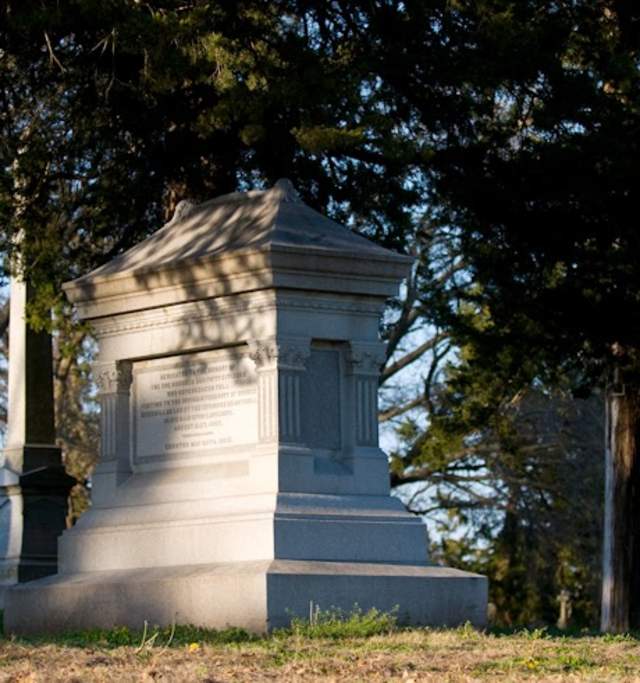Historic Cemeteries
Nothing gives better insight into a people’s history and culture than the way in which they memorialize the deceased. In recent years, efforts to find, restore, and tour historic cemeteries have grown in popularity across the United States as people seek greater connections to both family and local stories. Lawrence has a number of burial grounds that provide terrific insights into our heritage, and several are available for public viewing.
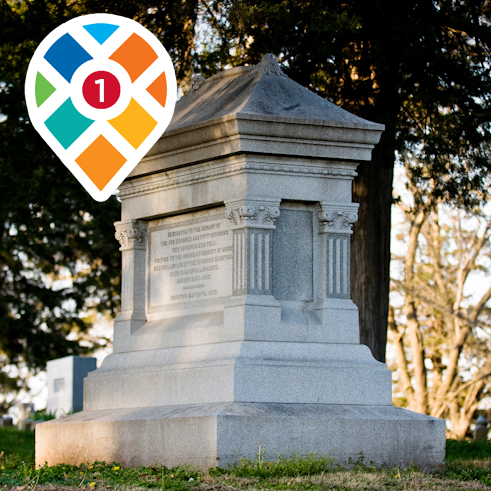
1605 Oak Hill Avenue
THE KANSAS ARLINGTON
OAK HILL CEMETERY
In 1865, this beautiful spot became the new burial site for victims of Quantrill’s Raid as well as numerous other residents. Oak Hill’s many striking memorials include the monument to raid victims, a statue commemorating Spanish-American War soldiers, and a tree-trunk marker for Lucy Hobbs Taylor, the first female dentist in Kansas. So many leaders of the Kansas territorial and Civil War eras are interred in Oak Hill that journalist William Allen White called it the “Kansas Arlington.”
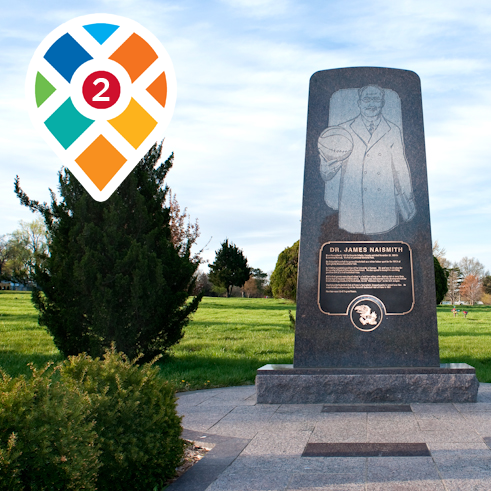
1517 E 15th Street
HOME OF LEGENDS
MEMORIAL PARK CEMETERY
Opened in 1926, Memorial Park represented a new movement in cemetery design that rejected eye-catching monuments on public ground in favor of urban, park-like scenery under private management. Markers are mostly at ground level, emphasizing the open landscape. But the large memorial to basketball inventor James Naismith and other big names in KU hoops cannot and should not be missed.
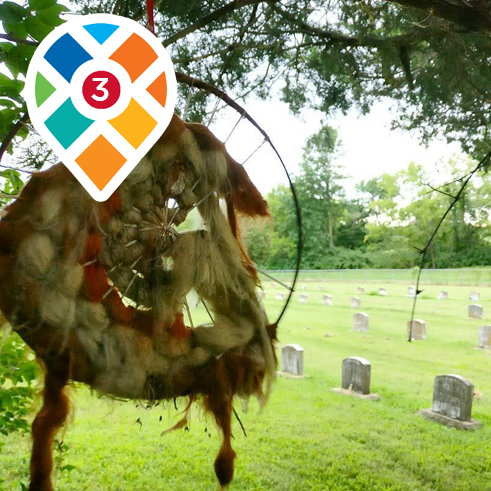
Kiowa Ave on Haskell Indian Nations University campus
YOUTH CUT SHORT
HASKELL INDIAN NATIONS UNIVERSITY CEMETERY
These small stone markers laid in neat rows emphasize institutional order and tragedy during the early years of Haskell Indian Nations University. Opened in 1884 as Haskell Indian Training School, the facility initially boarded and taught Native American children who had been uprooted from their families and forced to adopt white ways. The toll from illness was high, and half of those buried here died within the first five years of Haskell’s existence. Today, Haskell Indian Nations University owns and maintains the cemetery, which is open to the public during business hours Monday through Friday.

Irving Hill & Constant Ave on University of Kansas campus
FINAL RESTING PLACE OF MARTYRS & JAYHAWKS
PIONEER CEMETERY
In 1854, the bare hilltop of Mount Oread offered the newly arrived settlers of Lawrence a perfect spot to inter their loved ones. In subsequent years, Pioneer Cemetery became the burial site for Thomas W. Barber—an early victim of proslavery fighters who was memorialized in a famous poem—as well as Civil War soldiers and residents killed in Quantrill’s Raid. Today, the cemetery is reserved for University of Kansas faculty and staff; look for the KU Jayhawk adorning many markers.

3600 W 6th Street
DOMESTICITY & TRAGEDY
DAVIS CEMETERY
This farm cemetery is located on what was once part of the Old California Trail. Domestic or home place burial plots were common in eastern Kansas during the state’s settlement period. In 1863, George Burt—a victim of Quantrill’s Raid—was buried here on his family’s farm. A relative of the Burts named Henry T. Davis then bought out their farm and later buried his family here. Today, Davis Cemetery stands as an island of history in the midst of modern commercial development.

E 425th Rd, Lecompton
COMMUNITY & REMEMBRANCE
MAPLE GROVE CEMETERY
Lecompton settler George W. Zinn started a family cemetery on his property in 1862. Subsequent years saw the spot used as a burial place by other town residents—who took on unofficial roles as undertakers and sextons—until the Maple Grove Cemetery Association ultimately purchased and incorporated the site in 1875. The gravestones in Maple Grove collectively relate the history of a community founded by hardy pioneers during a turbulent era and maintained through the years by their descendants.
More about Maple Grove Cemetery

E 500 Rd
PERSISTENCE AMID ENCROACHMENT
CLINTON CEMETERY
Established in the 1860s for the growing community of Clinton, this extensive cemetery now occupies a peninsula jutting into Clinton Lake. Land clearance for construction of the lake began in the 1960s and swallowed up much of the farmland once tilled by Clinton residents who are buried here.

607 E 550 Rd
WHERE TRADITIONS SURVIVE
WASHINGTON CREEK CEMETERY
Washington Creek Church of the Brethren belongs to the Old German Baptist sect and is one of several churches established in the late nineteenth century by Douglas County’s large German-American population. The church’s cemetery is still active and now contains burials of people from many different backgrounds.

E 1500 Rd, Baldwin City
NATURAL & SCULPTURAL BEAUTY
PRAIRIE CITY CEMETERY
On a country road southwest of Baldwin City sits a little-known site of peace and remembrance—one of Douglas County’s oldest continuously operated cemeteries. Established in 1855, the combined Prairie City/Mount Calvary Cemetery features wonderful examples of 19th-century grave statuary surrounded by natural seclusion.
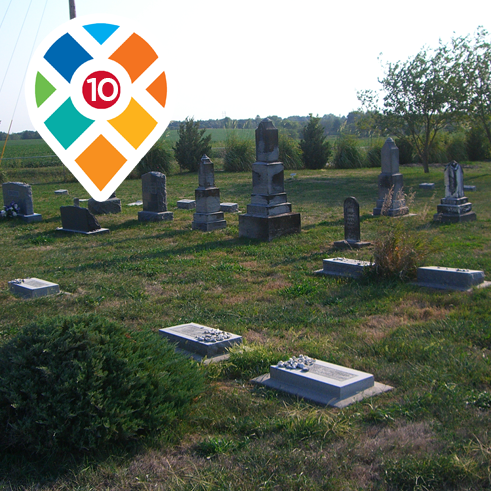
1301 E 2100 Rd, Eudora
HEBREW HISTORY ON THE PRAIRIE
BENI ISRAEL CEMETERY
Several of the German immigrants who founded Eudora in the 1850s belonged to a Chicago-based B’Nai Israel Jewish congregation. Many of Douglas County’s early business owners and community leaders were members of this congregation and were buried in Eudora’s B’Nai Israel Cemetery, even after the congregation moved to Lawrence. In 1978, the Lawrence Jewish Community Congregation reactivated the cemetery.
Cemetery Etiquette
- Obey all posted rules
- Obey cemetery hours
- Be respectful of those around you
- Do not leave trash
- Leave everything as you found it
- Your mission is to PRESERVE: Don’t touch the monuments or gravestones
- Drive with care, remain off the grass
- Walk between headstones, don’t stand on top of a burial place

Content provided by Watkins Museum of History


